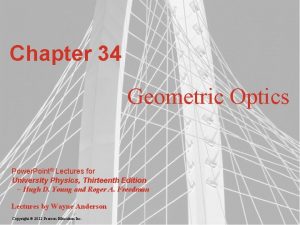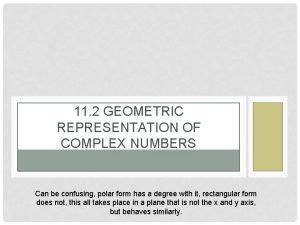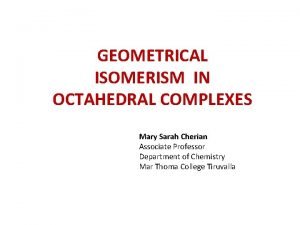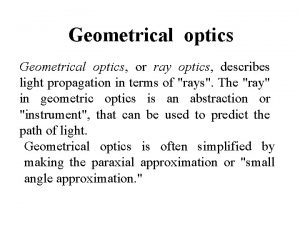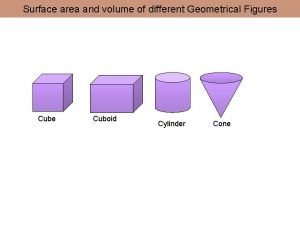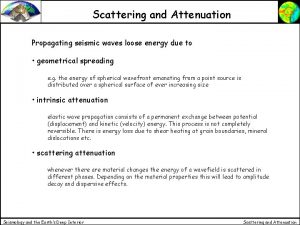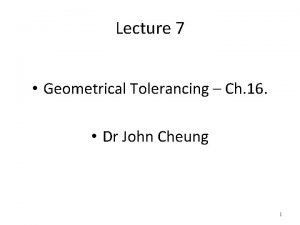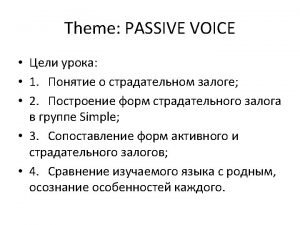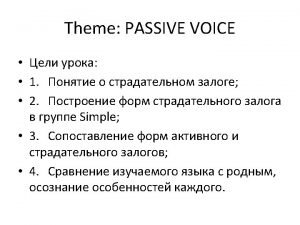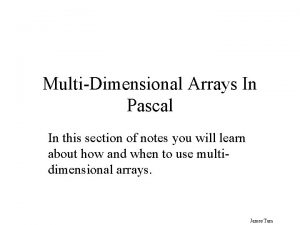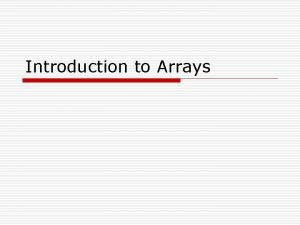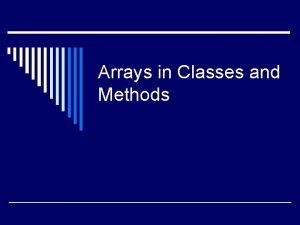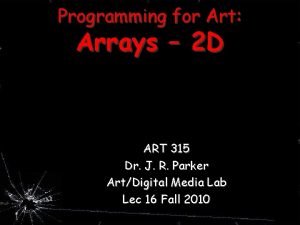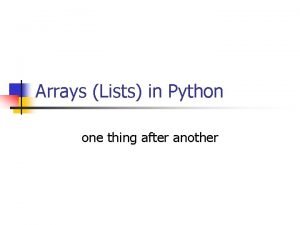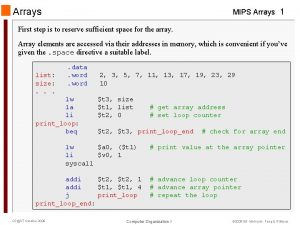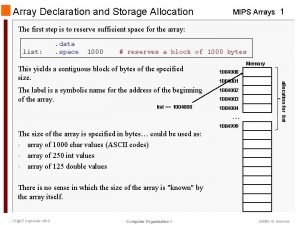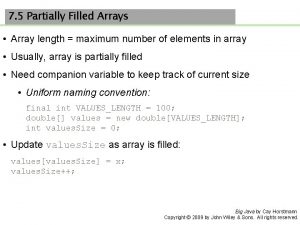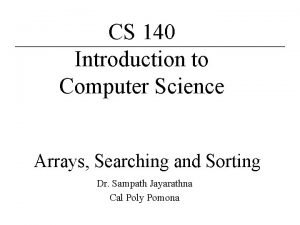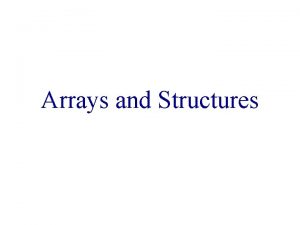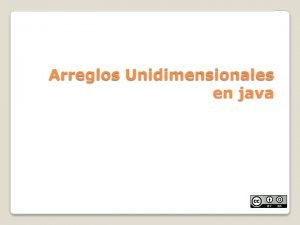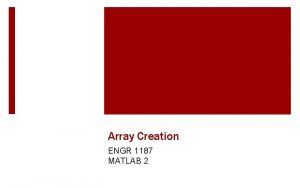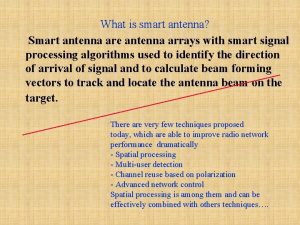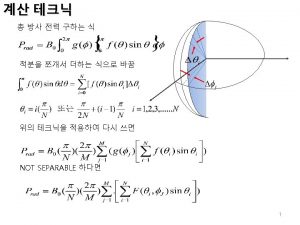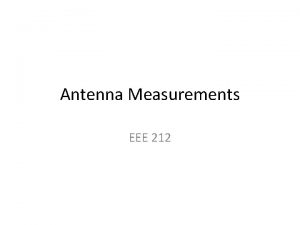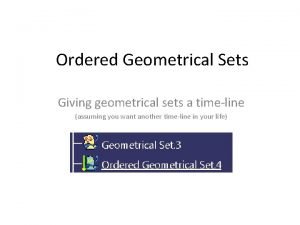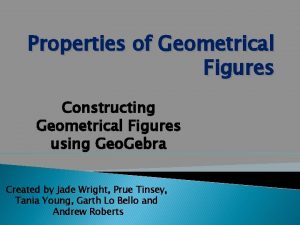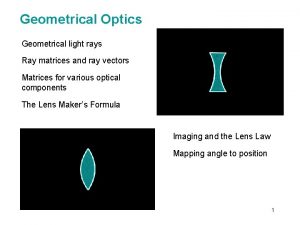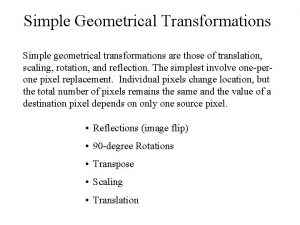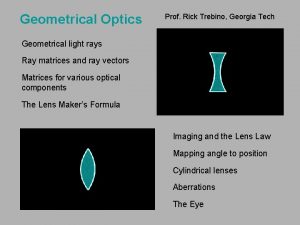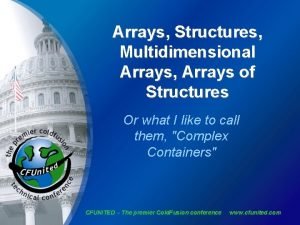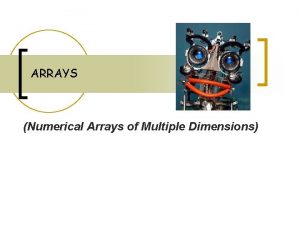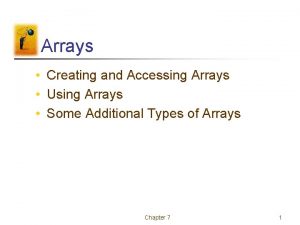Smart antenna arrays a geometrical explanation of how













































- Slides: 45

Smart antenna arrays - a geometrical explanation of how they work Peter F. Driessen Electrical and Computer Engineering University of Victoria B. C. Canada www. driessen. ca

Outline • • Introduction Capacity expressions Ricean channels Line-of-sight channels Specified environments System design Summary

Introduction • With multiple antennas at both ends of a radio link, • Channel capacity grows linearly with number of antennas by – sending different messages on each antenna on the same carrier frequency, and – Separating the messages using the multiple antennas at the receiver • 8 antennas yield 8 times the capacity • Generalized “polarity”

Introduction (2) • If send same message on each antenna • Then we get only the power gain of the antenna array, and • Capacity grows only logarithmically with the number of antennas • 8 antennas yield 3 times the capacity

Outline • • Introduction Capacity expressions Ricean channels Line-of-sight channels Specified environments System design Summary

Channel capacity n. T transmit antennas, n. R receive antennas Channel transfer function is a matrix n. T x n. R of complex scalars

Channel capacity Generalized Shannon capacity for matrix channel

Outline • • Introduction Capacity expressions Ricean channels Line-of-sight channels Specified environments System design Summary

Ricean channels



Outline • • Introduction Capacity expressions Ricean channels Line-of-sight channels Specified environments System design Summary

Line of sight • Close antenna spacing • Wide antenna spacing – 3 examples • Narrow-wide spacing – Narrow spacing (constrained to practical size) at one end, – wide spacing at the other end

LOS - close antenna spacing (1) All elements have same amplitude and phase (e. g. all equal to 1)

LOS - close antenna spacing (2)

LOS - wide antenna spacing


T 1 R 1 T 2 R 2


T 1 R 2 T 2 R 1

Example 3



Narrow-wide spacing



For large number of array elements , arc = 126 degrees


Outline • • Introduction Capacity expressions Ricean channels Line-of-sight channels Specified environments System design Summary

Street canyon View from above buildings street buildings

Capacity in street canyon


Ricean channels


Capacity calculation H is a combination of LOS matrix of rank depending on geometry plus Rayleigh matrix

Minimum capacity, high correlation Large k, and close-spaced antennas Small k, independent Rayleigh, antennas spaced sufficiently for small correlation Maximum capacity, no correlation Large k, and wide-spaced antennas to a specific calculated spacing




Outline • • Introduction Capacity expressions Ricean channels Line-of-sight channels Specified environments System design Summary

System design options Mobile cellular


System design options • Fixed wireless – Antennas spaced equally at both ends of link

Outline • • Introduction Capacity expressions Ricean channels Line-of-sight channels Specified environments System design Summary

Summary • Geometric interpretation of multiple antenna systems – Transmitter antenna pattern has nulls on all but one receiver antenna – Thus can have independent channels on the same carrier frequency
 Smart antenna
Smart antenna Geometrical data
Geometrical data Geometric vs structural isomers
Geometric vs structural isomers Geometrical shadow
Geometrical shadow Geometrical optics ppt
Geometrical optics ppt Geometric representation of complex numbers
Geometric representation of complex numbers Basic geometric features of symbology
Basic geometric features of symbology Geometrical isomerism
Geometrical isomerism Geometrical
Geometrical Circular surface area of cylinder
Circular surface area of cylinder Geometric tolerance
Geometric tolerance Geometrical optics
Geometrical optics Geometrical spreading
Geometrical spreading Permissible straightness tolerance
Permissible straightness tolerance Street smart vs book smart quotes
Street smart vs book smart quotes Everfi future smart ways to pay answers
Everfi future smart ways to pay answers One smart man he felt smart
One smart man he felt smart It's not how smart you are it's how you are smart
It's not how smart you are it's how you are smart One smart man he felt smart
One smart man he felt smart Book smarts vs street smarts
Book smarts vs street smarts Kim ung yong
Kim ung yong Interserf
Interserf Why do we need arrays?
Why do we need arrays? Arreglo java
Arreglo java Microsoft small basic
Microsoft small basic Pascal 2d array
Pascal 2d array Global arrays in c
Global arrays in c Ragged array
Ragged array Facts about arrays
Facts about arrays Arrays
Arrays Python find index of max
Python find index of max Mips array example
Mips array example Dynamic arrays and amortized analysis
Dynamic arrays and amortized analysis Dynamic p table
Dynamic p table Mips declare array
Mips declare array Partially filled array
Partially filled array Computer science arrays
Computer science arrays Veteork
Veteork Day 3: arrays
Day 3: arrays Advantages of array
Advantages of array Polynomial representation using array in c
Polynomial representation using array in c Arreglos unidimensionales y bidimensionales en java
Arreglos unidimensionales y bidimensionales en java Parallel arrays examples
Parallel arrays examples Microled arrays
Microled arrays Redundancy array of independent disk
Redundancy array of independent disk Creating arrays matlab
Creating arrays matlab




